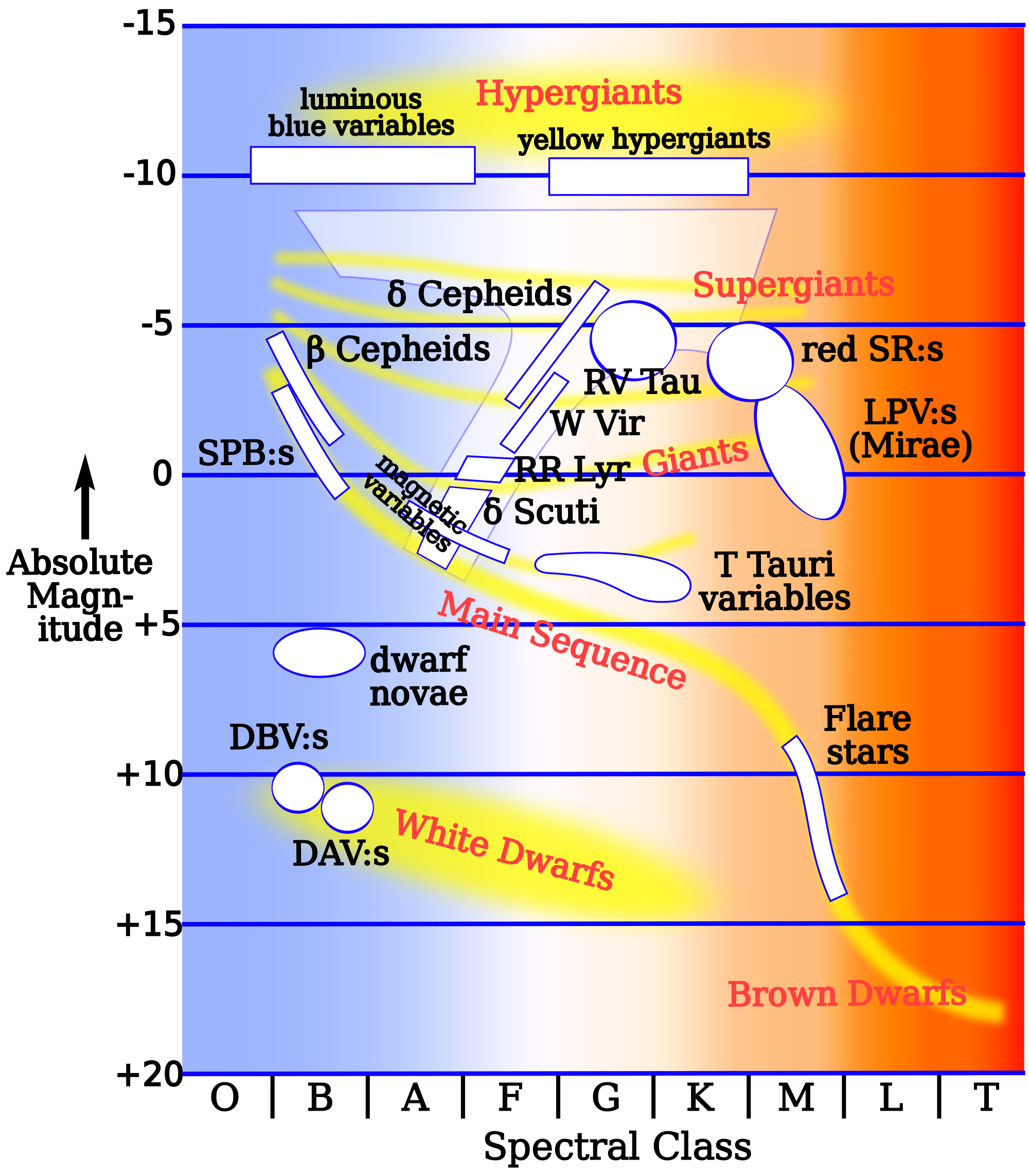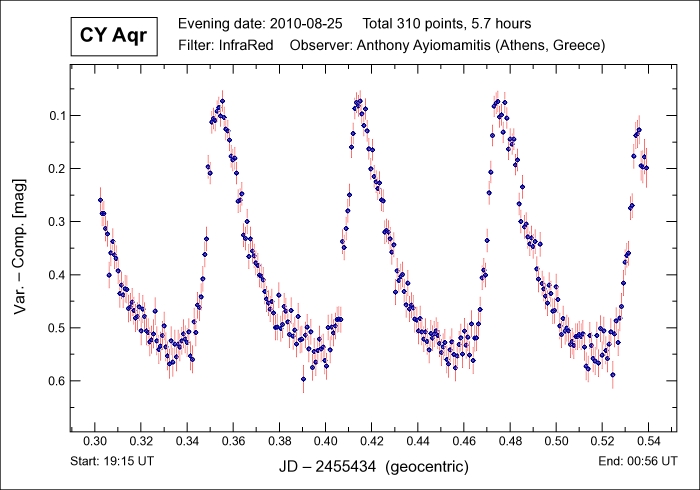Variable star designation
To name variable stars, a system modeled on the Bayer designations system was developed in which an identifier followed by the Latin genitive of the constellation name will be used.
More details
As in previous centuries, only a few variable stars were known, it seemed reasonable to use the Roman alphabet from R as an identifier, for example R Lyrae. This should be a double assignment of large Latin letters, which were also used in the Bayer letters in the constellation Cygnus to Q, are excluded. By the year 1836, the star naming was reached only in the constellation of the Serpent at the letter S.
With the advent of photography in the 19th century, however, the number of detected variables increased rapidly. Instead of long -visual series of measurements could now be about to go to compare recorded at different distances sky photos with each other. This, however, reached the letter Z name system when its limit, although in many constellations still further, variables were named. Similarly, it was once given also the Bayer designations. The naming system has therefore been extended to include double letters, first from RR to ZZ '', then again from AA to QZ.
As well as this is no longer enough, hit the Dutch astronomer Albertus Antonie Nijland before, to make the system of naming from scratch and just the names V1, V2, V3, ... to use: the V for variable, followed by a sequential number. Since some of the assigned name, however, were already well established, such as for RR Lyrae stars and W Ursae Maiori star, this new system was used until the number V335.
The current naming system for variable stars, therefore, is for each constellation:
Examples of such stars are named R Leonis, VY Canis Majoris and V373 Scuti.
- Observational astronomy
- Onomastics










